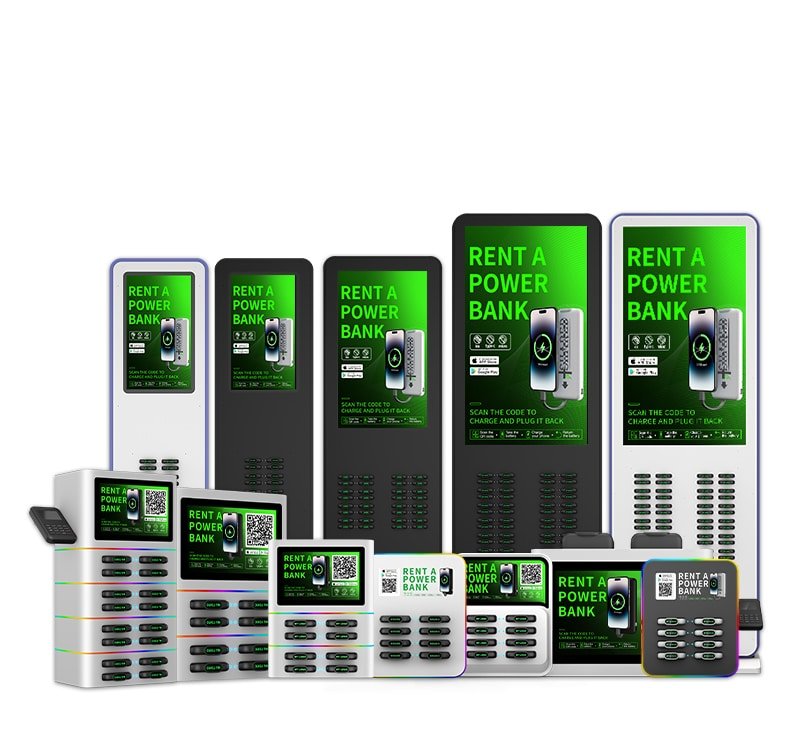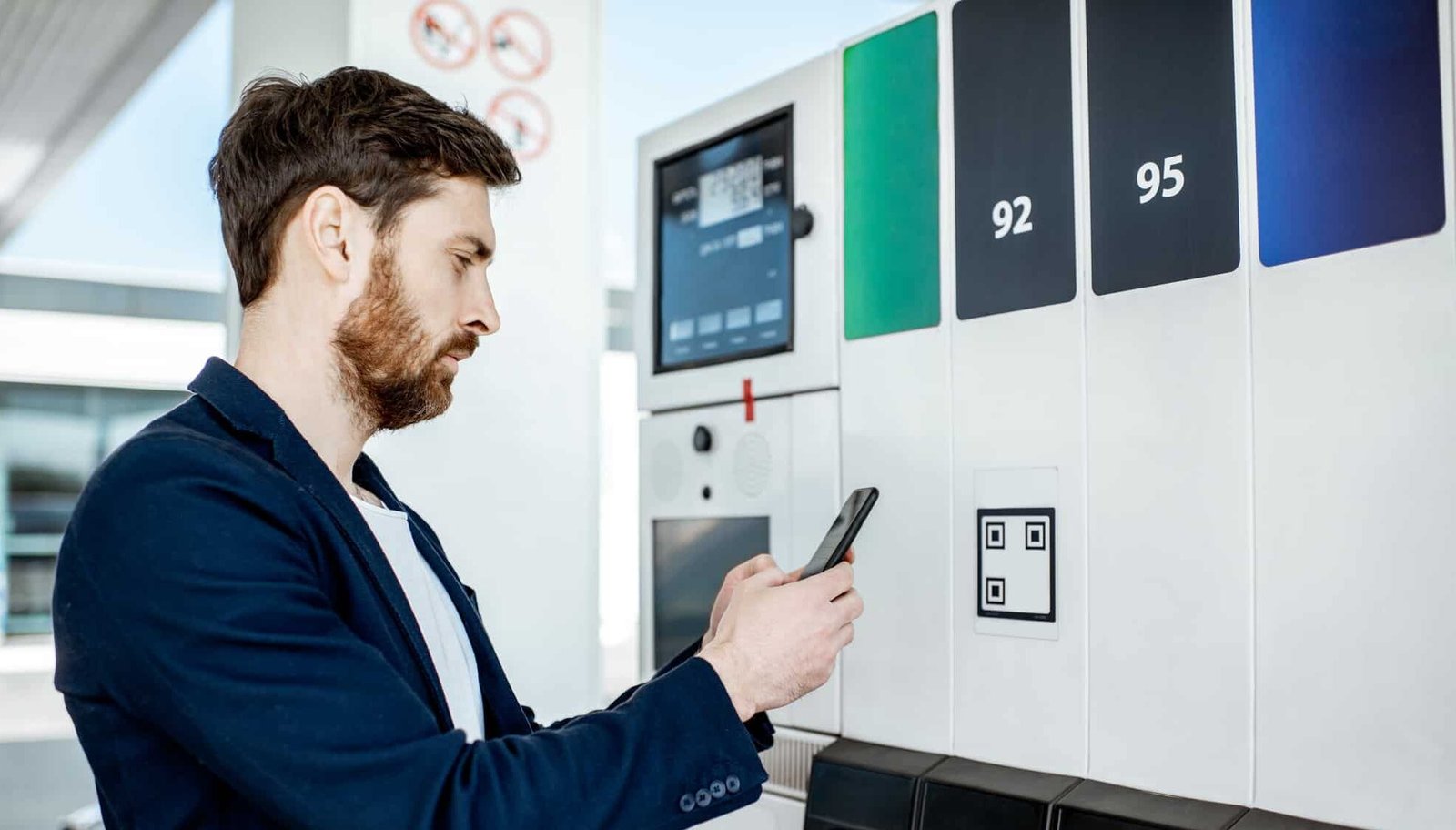Liberation from the App Store: Finding Power When Your Phone’s Already Dead
Welcome to the ultimate modern paradox: You need power to find power. Your phone’s gasping its last digital breaths, and the solution requires downloading a 75MB app over spotty public WiFi, creating an account, verifying your identity, adding payment details, and granting an alarming array of permissions—all while your battery percentage ticks down like a doomsday clock.
It’s the perfect business model: By the time you’ve set up the app, you’re already their ideal customer—desperate, low on options, and ready to pay almost anything to delay the digital darkness.
But there are alternatives to this cycle of dependency. This guide reveals the increasingly rare but still existing world of app-free power bank rentals—the charging options that don’t demand your data, storage space, and firstborn child just to keep your phone alive for a few more hours.
The Visual Signatures: Spotting Power Banks in the Wild
When your phone’s already dead or clinging to its final percentage points, you need to hunt for power the old-fashioned way—with your eyes. Look for these telltale signs:
- Orange kiosks: The industry’s dominant color, visible from a distance
- Lightning bolt symbols: Universal icon for “electronic salvation here”
- Retail counter stations: Often placed near checkout areas
- Digital displays: Screens showing pricing and availability information

The most reliable hunting grounds remain consistent across global cities:
- Transit hubs (airports, train stations)
- Shopping mall information desks
- Convenience store chains
- Hotel lobbies
- Tourist information centers
Pro tip: Follow the wall-huggers. That group of people huddled in the corner around wall outlets? They know where the free power is, and nearby is often where you’ll find paid power bank options for those unwilling to be tethered.
The Human Element: Asking Without Speaking the Language
In unfamiliar territory or foreign countries, the direct approach often works better than digital solutions:
- The universal mime: Show your dead phone while making the international “I need power” hand gesture (phone to ear, followed by battery-drain motion)
- The paper backup: Keep a small card with “Power Bank?” written in local languages of places you visit
- The strategic approach: Staff at information desks, baristas, and security guards typically know exactly where charging options hide
Remember: The people working in high-traffic areas have been asked this question hundreds of times. You’re not being original, just human—and they’ll usually point you in the right direction with minimal explanation needed.
No-App Rental Methods: The Digital Minimalist’s Options
The QR Code Workaround: Scanning Without Commitment
The most common app-free option uses QR codes to bypass the full app download:
How it typically works:
- Scan QR code on the station (requires minimal battery and camera function)
- Open the resulting web page (lightweight browser use)
- Enter payment details directly
- Receive an unlock code or tap-to-unlock button
The catch? This method usually incurs a 10-20% “convenience fee” for avoiding the app. That’s the tax you pay for digital minimalism and preserving your phone’s storage space.
Critical warning: Screenshot the return instructions and station location before your journey. Without the app’s map function, finding a return location becomes your responsibility.
The Credit Card Tap: The Tourist’s Salvation
In tourist-heavy locations and transit hubs, some forward-thinking providers offer direct credit card payment options:
The process:
- Tap credit card on NFC reader
- Select rental duration on screen
- Confirm charge
- Station dispenses power bank
This method typically charges premium rates—sometimes 30-50% above app prices—but requires zero registration, verification, or setup. For the one-time user or desperate traveler, this premium often represents money well spent.
The cynical truth: These stations are deliberately placed in locations where international travelers are most desperate and least price-sensitive. The convenience isn’t for you—it’s for their profit margins.
The Dying Breed: Human-Operated Rentals
A rapidly vanishing species in the charging ecosystem: staffed kiosks where actual humans handle the rental process:
Where to find them:
- Premium hotel concierge desks
- Conference center business services
- Airport service counters
- High-end shopping malls
These face-to-face rentals typically require:
- ID or room key as collateral
- Cash payment (often with no deposit)
- Return to the same location
The upside? Negotiation possibilities that algorithms don’t offer. Late returns can often be handled with a smile and apology rather than automatic maximum charges.
Regional Variations: Where No-App Options Still Thrive
The availability of app-free options varies dramatically by region, reflecting broader cultural approaches to technology and service:
Asia: The QR Code Kingdom
In China, Japan, and South Korea, QR code payment is so deeply integrated into daily life that power bank services naturally offer this option. Look for:
- WeChat/Alipay direct scan options in China
- Convenience store chain integrations in Japan
- Transit card compatibility in South Korea
The integration is so seamless that many tourists don’t realize they’re using a “no-app” option—the payment happens through platforms they’re already using for everything else.
Europe: The Cafe Culture Connection
European cities, particularly in France, Italy, and Spain, maintain a tradition of cafe-based charging solutions:
- Ordering-counter power bank rentals with receipt verification
- Table service power delivery (sometimes free with minimum purchase)
- Hospitality-focused systems requiring only a table number
These systems reflect a service culture that still values human interaction over pure digital efficiency—though they’re increasingly endangered by corporate power bank networks.
North America: The Credit Card Commitment
The US and Canada have embraced tap-to-pay systems more enthusiastically than comprehensive app ecosystems:
- Airport kiosks accepting contactless payment
- Hotel-based systems linked to room charges
- Convention center services with badge-scan options
The approach reflects the region’s credit card dominance and reluctance to adopt the super-app model that dominates Asian markets.
The No-App Price Premium: What You’re Really Paying For
Let’s be honest about the cost of digital freedom. App-free options nearly always come with price penalties:
| Access Method | Typical Premium | What You’re Paying For |
|---|---|---|
| QR Code Direct | 10-20% | Avoiding data collection and app downloads |
| Credit Card Tap | 25-40% | No registration or identity verification |
| Human Service | 30-50% | Negotiation flexibility and return grace periods |
This isn’t accidental. The power bank industry’s business model depends on:
- Collecting your usage data
- Building user profiles
- Increasing switching costs through deposits
- Creating app-based loyalty
When you circumvent this system, they charge you for the privilege of privacy.
The Emergency Protocol: When Even No-App Options Fail
Sometimes you find yourself in the digital wasteland—no app, no QR scanning capability, no compatible payment method. When all else fails:
The Social Solution: Power Through People
- The honest approach: Ask someone already using a power bank if you can borrow it after they’re done
- The desperate plea: Offer cash directly to someone for their power bank access
- The community appeal: Explain your situation to staff at a cafe or store
Humans existed before apps, and kindness remains a viable technology even in our digital age. A genuine request for help with a dead phone still activates basic empathy in most people.
The Hardware Backup: Old School Solutions
When digital solutions completely fail, analog options remain:
- Disposable emergency chargers (available in many convenience stores)
- Simple USB battery packs with no smart features
- Wall outlets in public spaces (the original charging network)
The ultimate fallback position? Embrace the digital darkness. Turn your phone off completely, navigate using physical maps or asking directions, and rediscover the strangely liberating experience of being temporarily unreachable.
Conclusion: Power Without the App
The ability to find and use shared power banks without an app represents a fascinating counterpoint to our increasingly app-dependent world. It’s a reminder that sometimes the most effective solutions lie not in downloading another piece of software, but in understanding the physical and social infrastructure that surrounds us.
This approach to power bank access reveals something important about modern urban life: while digital solutions often promise convenience, they can sometimes create unnecessary barriers. The non-app methods we’ve explored demonstrate that sometimes the most straightforward path to power is the one that doesn’t require a smartphone.
The irony isn’t lost on us: in a world where we’re constantly told we need an app for everything, the most reliable way to find a power bank might be to look up from our screens and engage with the physical world around us. It’s a small act of digital independence in an increasingly connected world.
So next time your phone is dying and you’re tempted to download yet another app, remember: the power you need might be closer than you think, accessible through methods that don’t require a single swipe or tap.








